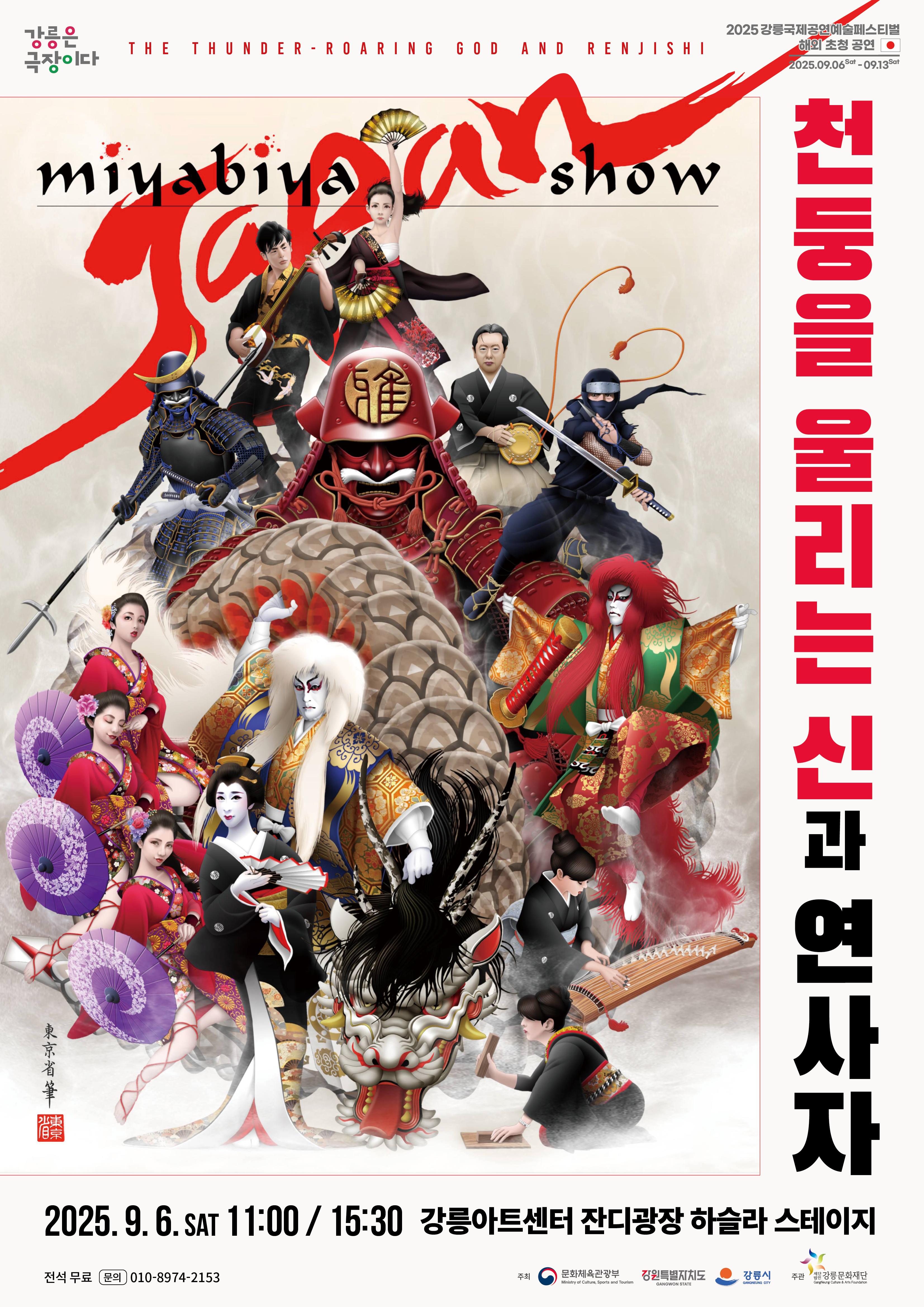· About the Program
The Thunder-Roaring God and Renjishi is a newly reimagined kabuki work that blends two of Japan’s most iconic traditional plays — Narukami and Renjishi. Based on Narukami, one of the celebrated “Kabuki Jūhachiban” (Eighteen Great Kabuki Plays) from the Ichikawa Danjūrō family, this production fuses its dramatic symbolism with the dynamic ritualism of Renjishi, creating a bold theatrical experience that bridges the classical and the contemporary.
Rich in mythological storytelling, emotional depth, and visually striking symbolism, the work explores universal human themes such as love, betrayal, rage, and reconciliation. By combining the aesthetic legacy of classical kabuki with imaginative modern interpretation, this non-verbal stage work transcends language and resonates with audiences around the world.
- afterJeongdongjin 25.08.04


